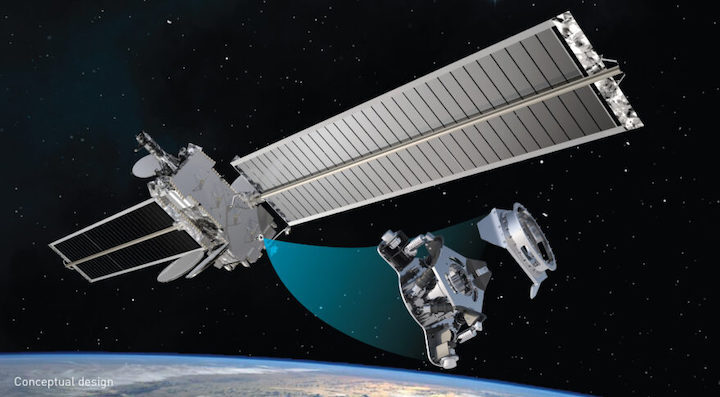5.04.2022

COLORADO SPRINGS – Lockheed Martin on April 4 released the technical specifications of a docking adapter that could be used by manufacturers to make satellites interoperable and easier to update on orbit with new technology.
The technical data for the Mission Augmentation Port (MAP) can be used by designers to develop their own docking adapters, said Lockheed Martin.
The company used the MAP standard to design its own docking device, called Augmentation System Port Interface (ASPIN).
“With this technology, we’re able to upgrade operational spacecraft at the speed of technology,” said Paul Pelley, senior director of advanced programs at Lockheed Martin Space.
“Just like USB was designed to standardize computer connections, these documents are designed to standardize how spacecraft connect to each other on orbit,” he said.
On-orbit satellite servicing usually is associated with refueling. That is just one aspect of life extension, Pelley said. There is also a need to keep satellites technologically up to date, especially large geosynchronous spacecraft that stay in service for decades. A standard docking port interface could facilitate the insertion of new processors, data storage devices or sensors, and some satellite components could be replaced with new hardware.
“What Lockheed Martin is envisioning goes beyond ‘filling up the tank’ to extend mission life,” he said.
Eric Brown, senior director of military space mission strategy at Lockheed Martin, said the company has tested the ASPIN adapter in simulations and plans to fly it to space to get it qualified. “We have multiple partners, both commercial and government, that are interested in taking that next step,” Brown told SpaceNews.
He said Lockheed Martin decided to develop the docking interface standard and release it to fill a need in the industry.
Many satellites that are in operation today have 20 or 30-year old technology and there is no means to update them in orbit, he said. One answer to that problem is to go to cheaper, smaller satellites that are more disposable and launched more frequently. But that solution doesn’t work for everybody, Brown said.
Some missions require large satellites that cost hundreds of millions of dollars, “and we still have to solve that technology refresh, these satellites are not disposable,” he said.
The vision that led to the MAP standard is that it could help create an aftermarket space industry that doesn’t exist today because satellites are not serviceable like airplanes, he said, In aerospace and defense, the aftermarket had created huge opportunities for a whole ecosystem of companies.
“Space has suffered from not really having an actionable aftermarket. And so by introducing the idea of satellite augmentation and enhancements we can also bring in the maintenance, repair and overhaul type of ecosystem that the air domain has enjoyed for years and years, and has introduced a lot of companies into aerospace and defense.”
A space aftermarket “could be beneficial for Lockheed Martin but also beneficial for a variety of new companies that maybe aren’t in a position to build the next generation of GPS but may be able to go and fly sensors that can augment a GPS vehicle.”
Quelle: SN

